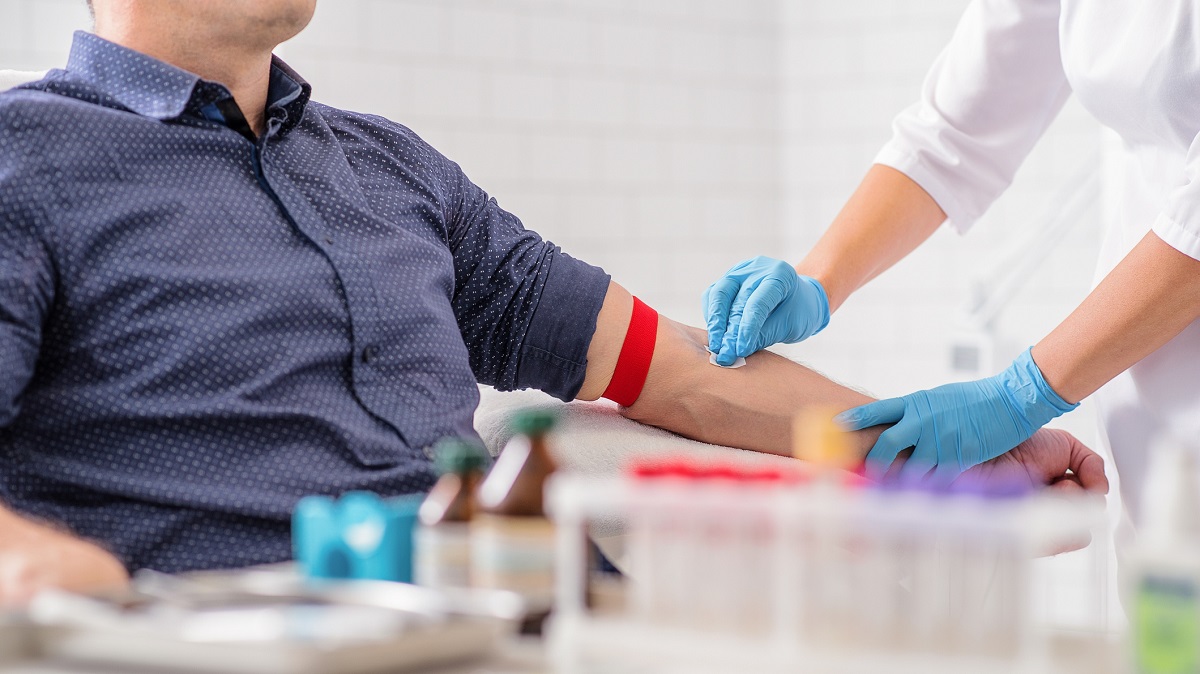Have you ever wanted to give blood but passed up the opportunity because you were a bit nervous or weren’t sure how to give blood and what’s involved?
There are a lot of myths surrounding giving blood, and you might not be 100% certain you’re eligible or how the process works.
We’ve answered all the questions you might have had about giving blood but been too shy to ask.
How to give blood
How often can I give blood?
Once you’ve made your first donation, you might be keen to repeat the experience.
Unfortunately, you won’t be able to give blood again straight away. Men can give blood every 12 weeks, women every 16.
Can I give blood if I’ve travelled recently?
It depends on where you’ve travelled to. Enter your destination into the my.blood.co.uk website to learn whether you can give blood or how long you’ll have to wait before doing so.
How long is the needle in for?
The whole process will take 5-10 minutes. You will sit with the needle in your arm until you’ve given 470ml, which is just under a pint.
Where can I give blood?
Contrary to what you might think, doctor surgeries and blood drive vans are not the only places you can do your good deed. The most common venues are community-based venues.
Check the Blood and Transplant website for the location of your closest donation bank.
How much do I have to weigh?
You have to weigh more than 7 stone 12 lbs or 50kg to be able to give blood.
For female donors aged 17-20, there’s a height and weight chart you can find online, to see whether you’re able to donate before you turn 20.
Can I find out which hospital my blood goes to?
A spokesperson for NHS Blood and Transplant says: “Yes, since May 2016, we now provide a text message service to donors who have provided us with a valid mobile number, which tells them when their blood donation has been sent to a hospital and which hospital has received it.”
Why are you allowed only cold drinks after giving blood?
It’s important to keep well-hydrated after giving blood, but just as important is the type of beverage you drink.
The NHS spokesperson confirms: “Hot drinks can cause your body temperature to rise, which makes you sweat to cool yourself down. This adds to the loss of fluid within the body, which can make some donors feel unwell.
“Until we know how blood donation affects you, we advise you stick to cold drinks.”
Can I drink alcohol afterwards?
This isn’t advised because, again, it’s unknown how your body will react to giving blood. In fact, drinking alcohol the same day can cause adverse reactions, such as fainting or dizziness.
Can I exercise afterwards?
It’s best to be cautious before rushing to the gym. Not only would your performance be affected, there’s an increased risk of bleeding from the venepuncture (where they take the blood from) or fainting.
NHS Blood and Transplant advises: “Wait until the following day or ensure you keep any exercise to a moderate level to help to avoid any such problems.”
Can you give blood if you’ve got tattoos?
Like with piercings, you have to wait four months from getting your tattoo before you can give blood.
If you give blood between four months and a year from your piercing or tattoo, you need to let staff know, so they can run additional safety tests.
This also includes microblading or semi-permanent makeup.
Can gay men give blood?
Yes – and recent changes in the rules treat everyone the same, irrespective of sexuality or gender.
In 2017, the government changed the rules that had previous barred homosexual men from giving blood. Previously, men who had sex with men couldn’t give blood for 12 months after sexual contact.
The rules changed again in 2020, allowing gay and bisexual men in long-term relationships to donate blood at any time. The change means that anyone – regardless of sexuality, the gender of their partner or the type of sex they have – can donate blood as long as they have been exclusively with the same sexual partner for three months or longer.
The period where someone cannot give blood has been reduced to 3 months for anyone who has had anal sex within the previous three months if they have had more than one sexual partner or a new sexual partner, irrespective of sexuality.
What is the difference between blood and platelet donations?
Blood contains red cells, plasma, white cells and platelets. When you donate, these components are separated and can be used to help up to three people.
However, platelet donation is different. Donors give platelets via a machine that extracts blood, removes the platelets and then returns the blood. Platelets help blood to clot and one donation can help 3 adults or 12 children.
In contrast to giving blood, platelet donations take a lot longer – about 60-90 minutes on a machine, though donors can give more regularly; every 2 weeks.
While the universal blood type is O negative, the universal platelet type – which can help patients of any blood type – is A negative.
Do you really get a biscuit at the end, and if so, what’s the most popular one?
Anyone who’s given blood before will know the best thing about the whole experience is the snack game once the hard bit’s done.
Snacks vary between venues, but we’ve got the undercover intel on what might be the nation’s favourite post-donation biscuit.
NHS Blood and Transplant says: “We get a lot of positive feedback about Clubs!”































































